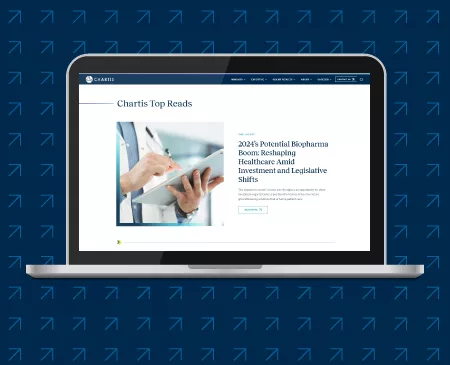The implications of inaccurate provider data are far-reaching for health plans. Inaccurate data snarls internal operations and can negatively influence member experience, provider experience, and network management. Each of these elements in turn can lower performance with Consumer Assessment of Health Care Providers and Systems (CAHPS) measures and Medicare Advantage Star Ratings, and ultimately limit a health plan’s ability to grow. By recognizing signs of provider data accuracy issues and acting to employ strategies to address them, health plans can prevent systemic issues, position themselves for effective provider network management, improve customer experience, and avoid compliance implications.
The Centers for Medicare and Medicaid Services (CMS) has been clarifying its posture on provider data for almost 10 years. In 2018, CMS conducted a review that revealed 48% of locations listed in Medicare Advantage provider directories contained at least one inaccuracy. The recent No Surprises Act put the onus on both health plans and providers to ensure specific data elements are correct. Despite all the prompting, there is little evidence that directory accuracy has improved. In fact, earlier this year, the Senate Finance Committee held a hearing about the severity of the issue and how it impacts patient access to care. Establishing best practices for managing accurate provider data is well worth the effort for health plans.
What Is the Extent of Your Provider Data Problem?
It is safe to say that all health plans have a provider data problem to some degree. Even health plans with departments and initiatives solely focused on provider data accuracy are still reporting low quality metrics. If your organization has not evaluated your data for accuracy, consider whether the following issues are reported across your organization:
- High call center volume.
- Claims being denied by mistake.
- Errors in your provider directory.
- Enrollment or credentialing delays.
The root cause of those issues is likely related to provider data accuracy—and traditional obsolete technology and manual operational processes may be exacerbating the situation. Health plans often consume provider data through multiple channels and then manage provider data in silos. If the credentialing function and claims department are not collecting data through a single channel, sharing data updates, or referring to the same source of truth, data can be out of sync. Once inaccurate data is introduced into the ecosystem, it is difficult to identify that there is an error and challenging to correct it. Additionally, the “right answer” for a data element might vary, depending on its intended purpose, who is requesting it, and where the data is coming from. To tackle the problem, it is important for health plans to establish an organization-wide data governance approach that includes 4 core elements.

Improving Provider Data Accuracy in 4 Steps
1. Establish a Cross-Functional Work Group
To address data accuracy, start by convening a cross-functional work group consisting of leaders within your organization who depend on provider data. This will help raise awareness of the potential issues and areas of opportunities. Draw from key stakeholders across your organization to initiate current-state discussions focused on answering these questions:
- What data does each department need?
- What does each data element mean?
- What is the current source of the data that the department depends on?
- How is the data validated?
- What happens when the department needs to make an addition or correction?
- What is the best way to move forward on improving data accuracy as an organization?
These cross-functional discussions can surface systemic issues, allowing the work group to identify near-term initiatives and longer-term needs.
2. Practice Good Data Hygiene
Consistent data hygiene across the organization will help improve data accuracy. Whether or not a health plan has siloed systems, it is essential to place priority focus on specific data segments that will impact quality. The list below illustrates basic tasks to maintaining good data hygiene:
- Update termed and retired providers.
- Remove inactive practitioner location addresses.
- Remove deceased practitioners from the system once the claims processing window is closed.
- Remove non-par providers without claims activity for the past 3 years.
- Remove duplicate records.
3. Focus on High-Priority Data Elements
With the passage of the No Surprises Act and the looming possibility of a CMS audit, specific data elements deserve extra focus. Even minor inaccuracies in the following data elements could lead to federal or state penalties—in addition to operational or member satisfaction issues.
|
About the Practitioner |
About the Practice |
|
First name
|
Tax ID Type 2 NPI Group/practice name Practice location address Accepting new patients (at the location) Appointment phone number Take patients by appointment |
Errors within any of these data elements present a risk. One regional health plan discovered that more than 40% of claims were being mistakenly denied because of inaccurate provider data.
The following example shows small discrepancies in the practice location address across a health plan’s different data systems.

While these discrepancies may seem minor, the differences could cause significant matching errors, which can lead to downstream issues.
In this specific case, putting all addresses that are ingested and managed within an organization through a USPS address standardization workflow will produce consistent street names, address descriptions, and abbreviations for all addresses. This process will create a higher chance of information matching, which will reduce the potential for any duplications or inaccuracies existing in the health plan ecosystem.
4. Create a Long-Term Provider Data Roadmap
Working on near-term tactical data cleanup activities will help reduce the symptoms of low data quality. However, considering more strategic solutions can better position a health plan for long-term success and growth.
-
Data Governance: Launch a provider data governance program at your organization to define each data element, establish a source of truth for each data element, define data standards, and create protocols for enforcing and monitoring data standards.
Establishing a data governance function will provide the rules that need to be followed across the entire organization.
-
Provider Data Management: Evaluate the use of an enhanced provider data management system that is used by all areas of the organization to ensure that data is captured, managed, and updated in a centralized place.
Once you have the rules established through the data governance function, this is where you will implement the rules.
-
Standardized Roster Management: Create a standardized provider roster intake and validation process to ensure that provider group data is captured consistently from your provider groups.
Sharing best practices with your providers will help them know how to send you their data so that it can be used and managed most effectively.
-
Third-Party Data Comparison: Compare your data with other sources, such as provider-supplied data or third-party validated data services, to highlight potential inaccuracies.
While no outside source will have perfect data, comparing your data to other data sets can signal issues that can be investigated.
What Provider Data Best Practices Look Like When Operationalized
By way of example, here’s a snapshot of how a payer might operationalize the “provider specialty” data element:
-
Data Governance: Identify a source list for valid specialty values, preferably an industry standard like the NUCC Taxonomy Code Set. And identify a primary department/function at your organization, like Credentialing, that is authorized to add or update a specialty.
-
Provider Data Management: When storing provider specialty in your provider data management system, make sure that only valid values can be saved. Create workflows to keep all functions and departments aligned so that all parties see the same specialty for a given provider. Ensure that “write access” for specialty is only available to authorized users.
-
Standardized Roster Management: When requesting roster files from provider organizations, insist that specialty has a designated, predictable header and column placement, and communicate the acceptable values from the source list. When ingesting the file, make sure that specialty is in the right place and that the value is an acceptable one according to your data governance rules.
-
Third-Party Data Comparison: Examine third-party data sources to see if the specialty saved for a given provider matches what the other source has. If there are discrepancies, flag them for investigation to find out if you have the most accurate and up-to-date information.
Make Provider Data Accuracy an Ongoing Priority
While the level of investment needed to initiate improvements can vary substantially across health plans based on the maturity levels of operations and technology, raising awareness and prioritizing provider data accuracy as a focus across the health plan’s entire organization will produce tangible benefits. Efforts can result in increased provider directory accuracy, improved provider enrollment turn-around times, and improved claims processing. Effectively managing provider data is critical for member experience, provider experience, differentiating your plan in the market, and ensuring a strong foundation for growth. Whether addressing short-term opportunities or embracing a longer-term strategy, optimizing provider data management is complicated and deserves consistent attention.
These strategies require significant cross-functional alignment, investment, planning, and change management efforts. Implementing these strategies will require a champion within your organization to lead and manage this effort, and the recognition that an investment of budget and resources in data accuracy will deliver meaningful returns. Engaging outside strategic assistance to perform a holistic review of your organization’s provider data management practices can shine a light on opportunities for improvement and set the stage to execute meaningful change.




